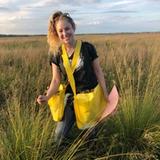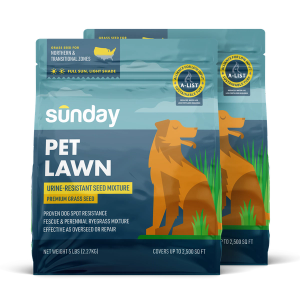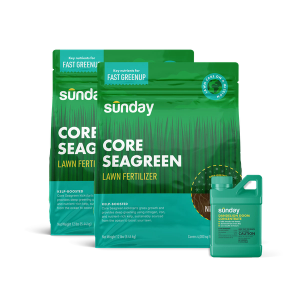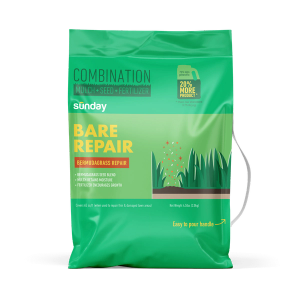Feeding birds is a source of enjoyment and learning—and it's often the first introduction to bird watching and becoming a novice birder. But with so many different brands, blends, and benefits of bird seed, how do you choose? At Sunday, we’ll help break down the bird seed game and get you up to speed on the very best seed.
Why do birds need seeds?
Bird seed is supplemental nutrition to wild birds' dietary needs—especially in winter and early spring when food is scarce, in preparation for migration, and in urban areas where development has fragmented bird habitats.
Types of quality bird seed
A bird’s preference for seed depends on a variety of factors, including beak shape, size, and feeding style. To attract a wide variety of diverse seed-eating birds, you’ll need to know the right seed to purchase or include in your seed blend.
Sunflower seeds
These seeds are available in three forms—black oil, hulled, or striped. Black oil sunflower seeds attract the widest variety of birds to feeders, making it the best overall seed type for wild bird feeding. Hulled sunflower "hearts" are readily eaten by most birds because they are not protected by shells, but that lack of protection also means they can spoil if they get too wet. Striped is best suited for birds with stronger beaks and will deter less desirable species like house sparrows.
- Attracts: bluebirds, chickadees, cardinals, titmice, finches, woodpeckers, wrens, buntings, grosbeaks, towhees, nuthatches, song sparrows, jays, and doves
- Feeder types: tube feeders, tray or platforms, hopper or chalet, and window feeders
Niger (formerly nyger)
This is a very small, black, oily seed loved by finches. It's commonly referred to as nyger or thistle, but it's now sourced from niger plants. Niger stays fresher when purchased in small quantities and is best for spring and fall migration periods.
- Attracts: house and purple finches, goldfinches, pine siskins, redpolls, juncos, and buntings
- Feeder types: clinging-mesh tube feeders and thistle sock feeders
Sunday Tip:
Why did Niger seed takeover? Nyger or thistle seed is actually invasive in North America. It was replaced by Niger, a similar seed from the aster family, and is sterilized to avoid further spread.
White proso millet
This type of millet is a small, round, tan seed found in many quality seed mix blends. There are other types of millet, but you should avoid them in seed mixes as they are “filler” seeds that will not attract desirable birds.
- Attracts: quails, sparrows, doves, towhees, juncos, wrens, buntings, chickadees, grosbeaks, and cardinals
- Feeder types: hopper or chalet, tube feeders, and tray or platforms
Sunday Tip:
Ground-feeding birds like quails and doves like this seed a lot. However, it’s best not to spread it on the ground if you’re not interested in feeding other wildlife like squirrels and rodents.
Safflower
This white, thick-shelled seed is no match for tough, large beaks. It has a bitter taste that has been observed to deter less desirable bird species like house sparrows and starlings, as well as squirrels from feeders.
- Attracts: quails, sparrows, doves, towhees, chickadees, grosbeaks, and cardinals
- Feeder types: tray or platforms, hopper or chalet, tube feeders, and window feeders
Cracked corn
Dried corn kernels broken into small pieces are a tasty addition to feeders. So much so that cracked corn will attract a variety of birds, along with wildlife like squirrels, deer, raccoons, and other mammals. Without a protective shell, this seed is susceptible to moisture and fungal issues. To avoid harming birds, store it in a dry place, ensure consumption in one to three days, check that feeders do not hold moisture, and clean up spills under feeders as needed.
- Attracts: quail, doves, jays, juncos, cardinals, grosbeaks, woodpeckers, and towhees
- Feeder types: tray or platforms, hopper or chalet, tube feeders, and window feeders
Peanuts
Shelled or in-shell peanuts are a high-fat treat for many birds at feeders. Be mindful, this is another calling card for local wildlife of all kinds. Similar to dried corn, peanuts should not interact with moisture, can be susceptible to fungal issues, and should follow the same clean-up and storage protocols.
- Attracts: woodpeckers, jays, chickadees, titmice, nuthatches, wrens, kinglets, mockingbirds, thrashers, and warblers
- Feeder types: tray or platforms, hopper or chalet, mesh feeders, and window feeders
Bird seed to avoid
Avoid the following five seed types. These are known as “filler” seeds and are consumed by less desirable bird species like house sparrows or parasitic nesters like cowbirds. These seeds also tend to be discarded to the ground which attracts pests, requires clean-up, and wastes the product (and money).
- Milo
- Red or golden millet
- Flax
- Oats
- Canary seed
Sunday Tip:
What’s a parasitic nester? It’s a bird that lays its egg in another bird’s nest. The nest owner unknowingly raises the chick, and usually will not successfully raise its own egg clutch. Over time, this is detrimental to threatened or endangered species. Avoiding filler seeds is just one way to avoid supporting parasitic nesters.
How to attract more birds
- Match seed to the right feeder. You’ve gone through the process of selecting the right seed to attract the right birds. The next crucial step is to pair your seeds to the feeders the birds prefer best.
- Place feeders in safe locations. Birds can be a little shy. In order for them to feed without fear, they need to feel safe. Place feeders near shrubs or trees so birds can seek shelter when needed. Keep birds safe from potential collisions by installing feeders around 10–12 feet from windows.
- Offer different feeder styles. Varieties of feeders exist because feeding styles and preferences are different from bird to bird. Offering more than one type of feeder will ultimately attract more birds.
- Just add water. Providing various types of water features, especially moving water, is the best way to attract more birds. Try pooling water rocks, bird baths, fountains, or larger installations like backyard ponds.
- Build more backyard bird habitat. You’re already on your way to attracting more birds—but if you want more, plant more bird-nurturing native plants and Sunday’s bird-friendly plants.
Cited sources
A Guide to Bird Feeding. Audubon International.
Audubon Guide to Birdseed. National Audubon Society
Feeding Birds: a Quick Guide to Seed Types. Cornell Lab of Ornithology.
Feed Wild Birds, EC 1554. Oregon State University Extension Service.
For the Birds: Bird Feeding Tips. University of New Hampshire Extension.
Selective Bird Feeding . University of Nebraska-Lincoln Extension.



















